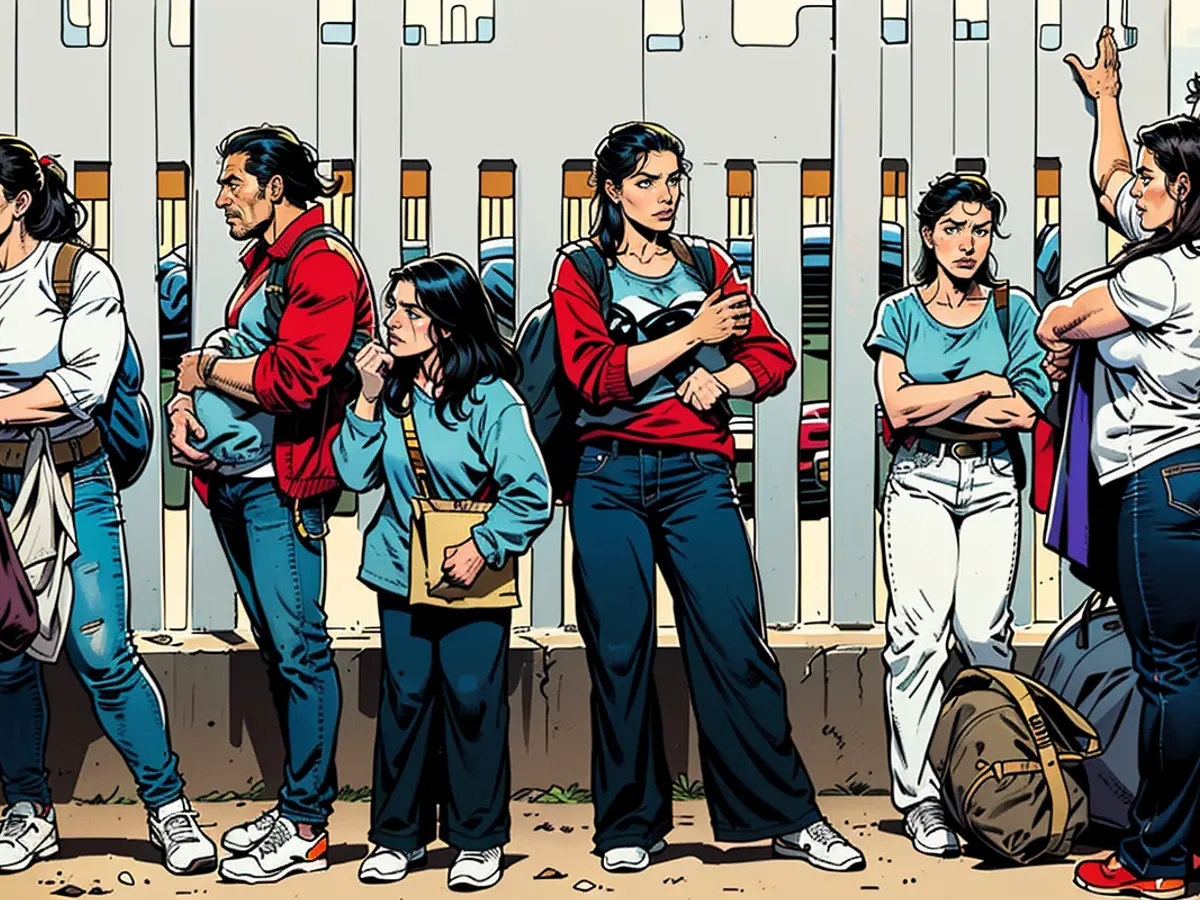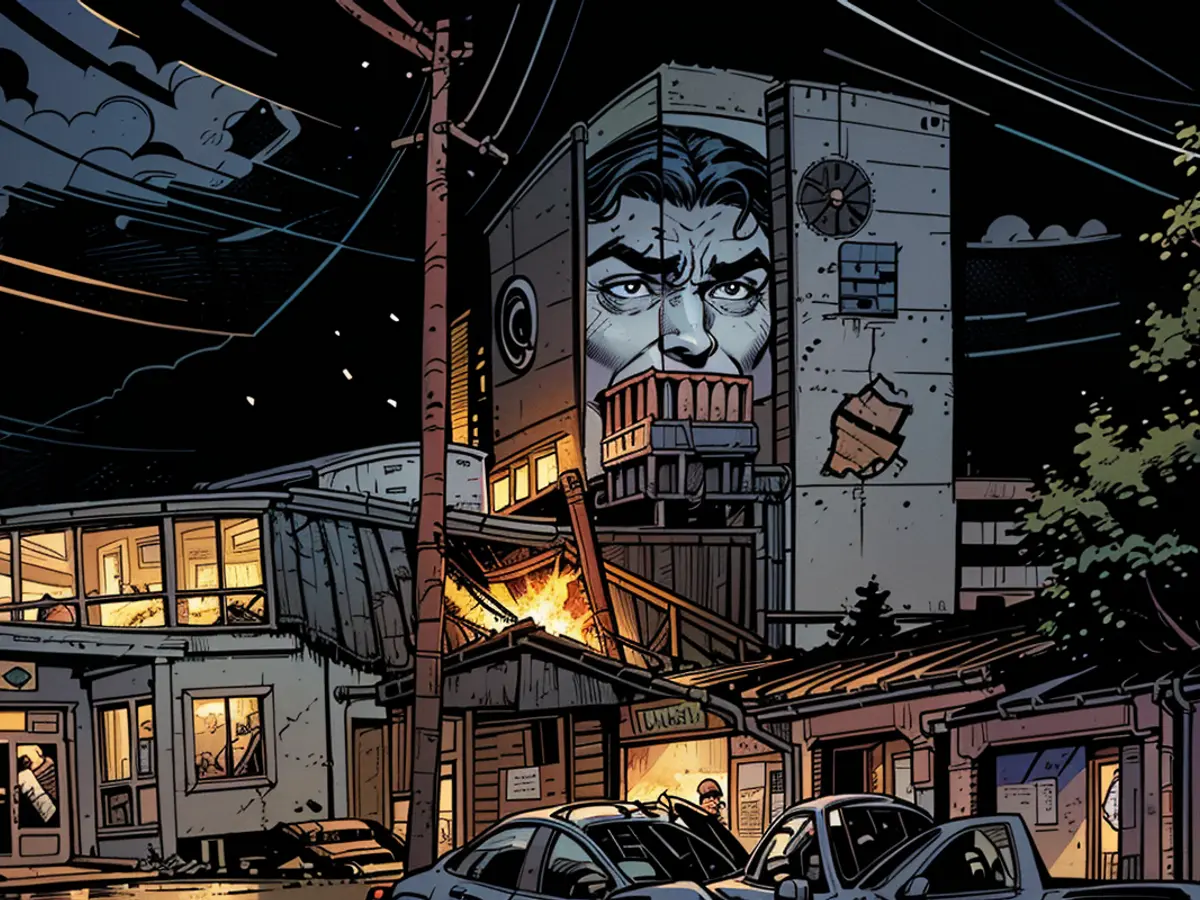The United States aims to limit immigration originating from Mexico.
Migrating from Mexico to the United States is a significant topic in the current U.S. presidential election campaign. The U.S. authorities aim to decrease the influx by modifying the registration process. This change allows asylum seekers to schedule appointments with U.S. authorities even in the southernmost Mexican states, a shift from the previous requirement of being in central or northern Mexico.
Teodora Gomez from Colombia quickly downloaded the "CBP One" app once she crossed into Mexican territory. She expressed curiosity about whether the new system would function effectively. Gomez and her two teenage daughters are currently resting beneath a tree alongside the border road leading to Tapachula.
The extension of app access to the south can be seen as a reaction to Mexico's request. The objective is to alleviate the pressure on migrants to travel as far as possible, up to Mexico City. Over the years, the Mexican government has made efforts to keep people in the south, away from the U.S. border. However, the lack of job opportunities and housing in southern cities like Tapachula led most migrants to proceed north despite Mexico's attempts.
If migrants can now wait for their appointments at the south - as Mexico hopes - they could avoid being caught by law enforcement or falling victim to organized crime while journeying north. With an appointment, they might theoretically move around undisturbed.
German Munoz from Honduras, traveling with his wife and three children, intends to register his family as soon as they reach Tapachula. "We shall proceed with an application here and wait for the appointment," said Munoz at the border on his way to Tapachula.
However, others continue to feel compelled to progress northward. Many migrants are burdened with debt and need to start repayments promptly. For instance, Gomez needs to relocate quickly to find work.
In response to establishing orderly asylum procedures on the southwest border, the "CBP One" app has proven to be a successful strategy for the U.S. During the 2023 fiscal year, over 2.4 million individuals crossed the border, according to U.S. data. Since the app's introduction in January 2023, more than 765,000 individuals have agreed to appointments to submit their asylum applications.
1,500 appointments per day
U.S. authorities issue 1,500 appointments daily when the Biden administration suspended the asylum process for illegal entrants in June.
Since its peak in December 2023, the number of illegal border crossings has decreased significantly. Washington attributes this decline mainly to Mexico's measures, such as intercepting migrants in the north and returning them to the south.
Mexico's expansion of "CBP One" has gained approval from the government. Foreign Minister Alicia Bárcena recently stated, "This will significantly aid us."
Violation of international law?
Aid organizations view the situation less favorably. In an open letter to the Mexican government, they described "CBP One" as a breach of international law, claiming that the app enables U.S. authorities to limit asylum eligibility. Many migrants have endured deplorable living conditions in overcrowded shelters or tents in Mexico for several months while suffering threats of kidnapping, sexual assault, torture, and extortion by criminals and authorities during their wait, the organizations detailed.
The United Nations has cautiously responded to the development. Although it has the potential to decrease risks for migrants traveling north, Giovanni Lepri, UNHCR's Mexico chief, emphasized the need for additional migration policy measures, such as supporting countries of origin and providing protection for individuals in transit countries.
In theory, Mexico's immigration agency permits migrants with a "CBP-One" appointment to travel freely to the U.S. border. However, aid groups report that migrants are sometimes still detained and forced to return south to keep them away from the border.
Drug cartels assume control
Historically, migrants have been targeted by smugglers and criminals in southern Mexico, though the region was generally safe for the rest of the residents. However, this situation has significantly transformed. The southern border region now serves as a battleground for Mexico's most powerful drug cartels, who are fighting for control of drug, weapon, and migrant trafficking routes. Violence is now prevalent in numerous border towns.
Migrants in Ciudad Hidalgo, located near the border river between Mexico and Guatemala, discuss whether to remain or proceed north. The primary deciding factor is financial: People hope for better job opportunities in central and northern Mexico – because they require funds to potentially wait for months for an appointment.
The implementation of the "CBP One" app in the southern Mexican states can be seen as a response to the War on Drugs in Mexico, as it aims to alleviate pressure on migrants and prevent them from traveling as far as Mexico City, where drug cartels have assumed control over trafficking routes.
The expansion of the "CBP One" app to the south has been praised by the Mexican government, but aid organizations argue that it violates international law and limits asylum eligibility, as migrants are often still detained and forced to return south.







